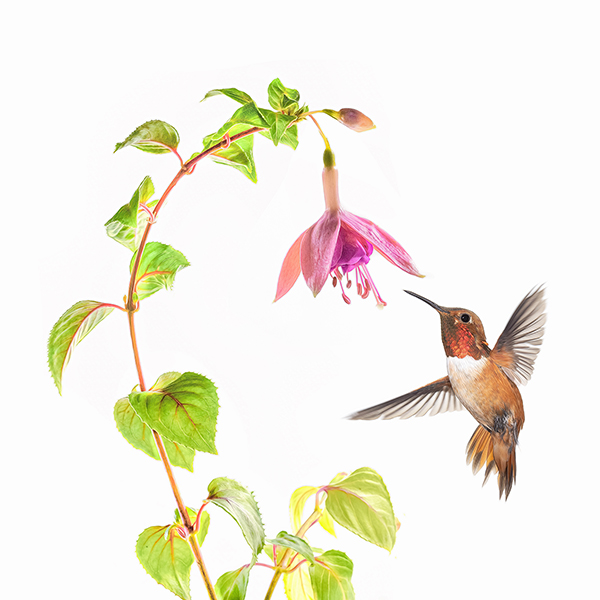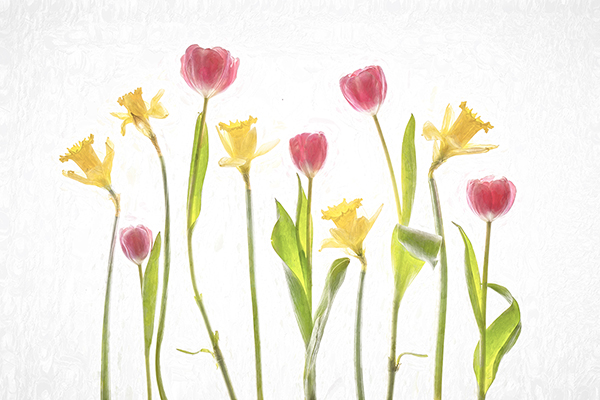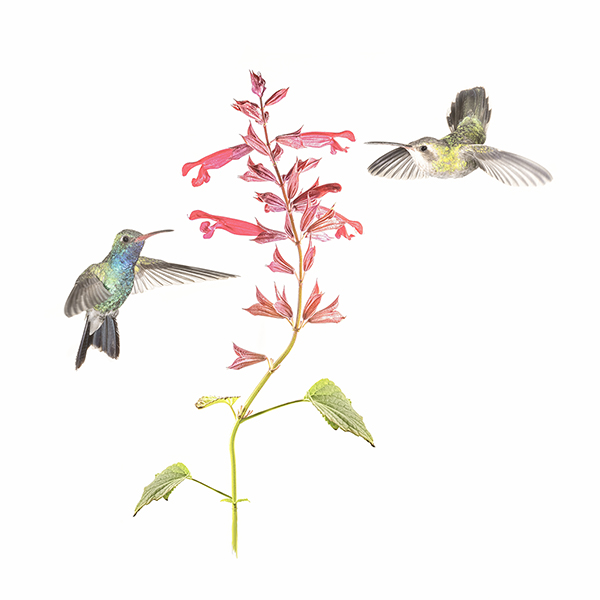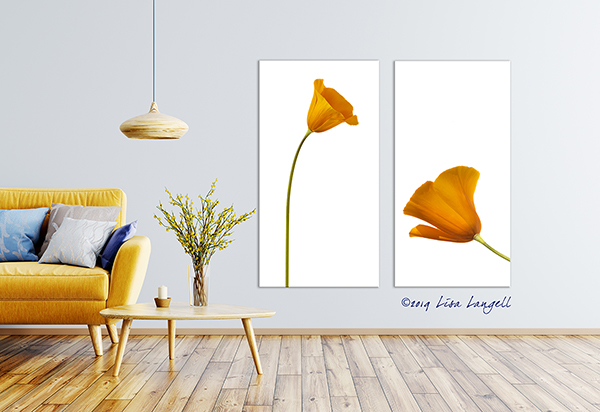By Jenn Gidman
Images by Lisa Langell
A variegated tulip sprinkled with dew, a hummingbird flitting about a fuchsia, a daffodil basking in the morning light, its creamy yellow corona stretching skyward. These are Lisa Langell’s subjects for her high-key imagery, delicately positioned in front of her camera and ready to be exposed to the masses—or overexposed, in this case.

SP 90mm, F/16, 1/200th sec., ISO 12800
“I love high-key photography because it’s so simple,” Lisa says. “Not necessarily always simple to photograph, but simple to enjoy. It’s so minimalistic, light, airy, and pretty, allowing your subjects to stand out on their own.”

SP 24-70mm (44mm), F/7.1, 1/80th sec., ISO 400
The high-key images Lisa creates with her Tamron SP 90mm VC Macro and SP 24-70mm VC G2 zoom lenses are targeted toward clients who are looking to enhance their home decor. “I like to call these pieces decorative art—once you hang one of these images on your wall, it becomes just that,” Lisa says. “Most of my clients who go for this type of photo don’t want super-realistic photography in their home. They’re looking for something softer and gentler, images that have plenty of negative space and work within their decor. I can see many of these images in someone’s sunroom or kitchen or bedroom.”
Lisa has a DIY indoor studio she uses for her close-ups, using white studio boxes lit from the outside in as her backdrop. “I light it from three sides and create a diffused light,” she says. “I tend to use less light in front of my subject, so that when I expose my subject, it’s exposed properly and my background gets blown out.”
For her outdoor shoots, Lisa takes advantage of natural light, either with or without a white backdrop. “You want a bright background, and subjects that are much darker than your background,” she says. “You also want a diffused light background, with your subject backlit, so avoid full sun. Hazy, gray sky days are perfect for high-key photography. You don’t want any direct light on your subject.”

SP 90mm, F/32, 2.5 sec., ISO 400
On occasion, Lisa will use flash, such as when she’s photographing hummingbirds, but as a steward of nature and wildlife, she’s done her homework on how to use such lighting ethically. “I use a five-flash setup for my hummingbird photos, using extremely low-powered flashes,” she says. “I’ve done extensive research in peer-reviewed journals on birds and flash photography, and I have a link on my site explaining my research. I’m very cognizant of photographing ethically without harming the birds.”

SP 90mm, F/14, 1/125th sec., ISO 3200

100-400mm f/4.5-6.3 Di VC USD
1/200 sec. ISO, F/25, ISO 250 (birds). Flowers were shot with the same settings using flash on a white backdrop and then composited.
Lisa relies on her histogram when creating her high-key images. “The goal is to overexpose, and there’s no set formula,” she says. “How much you overexpose depends on a variety of factors, including how bright the background is, what color the subject is, and how much contrast there is between the two. Always look at your highlight alerts or your zebras or whatever your particular camera does to alert you to highlight clipping. If I’m using spot metering and it’s automatically calibrating—and even then it might not be making the best judgment—then I’ll use exposure compensation, anywhere from less than a stop all the way up to three stops or more of light, depending on the subject and the contrast with the subject in the background.”
In post-processing, Lisa will concentrate on lightening the highlights. “I’ll lighten the white part of the image first,” she says. “If I’m in Lightroom or using a third-party plug-in, I find it works best to pull up my whites first, and then pull up the shadows or anything else I want to. It’s to taste, but I prefer a pure white background, as it’s easier to incorporate into a composite, collage, or gallery of images.”

SP 24-70mm (67mm), F/20, 0.5 sec., ISO 400
Lisa will customize a photo to perfectly complement the palette of her client’s color scheme or to otherwise meet their needs. “I have two versions of this daffodil you see here,” she says. “This one, which is a more lemony yellow, and then one I modified a bit for a gallery that was looking for a more buttery color. Or with the close-up of the orange ranunculus, I took that image and then converted the flower to pink. It’s all about color-matching and making the images make sense for the interior of my clients’ homes and offices.”

SP 90mm, F/32, 3.2 sec., ISO 400
Lisa is currently redesigning her website and working on the inclusion of a gallery dedicated to her high-key images. “It’s a different client base that’s drawn to this type of work,” she says. “Nature photography designed for magazines is very different than photography designed for a home, office, or commercial space. Most competitions and photography clubs are still focusing on more traditional nature photos you’d see in magazines and on calendars. I’m enjoying myself in this other world.”
To see more of Lisa Langell’s work and find out info on upcoming high-key photography workshops, check out her website or her Instagram.
